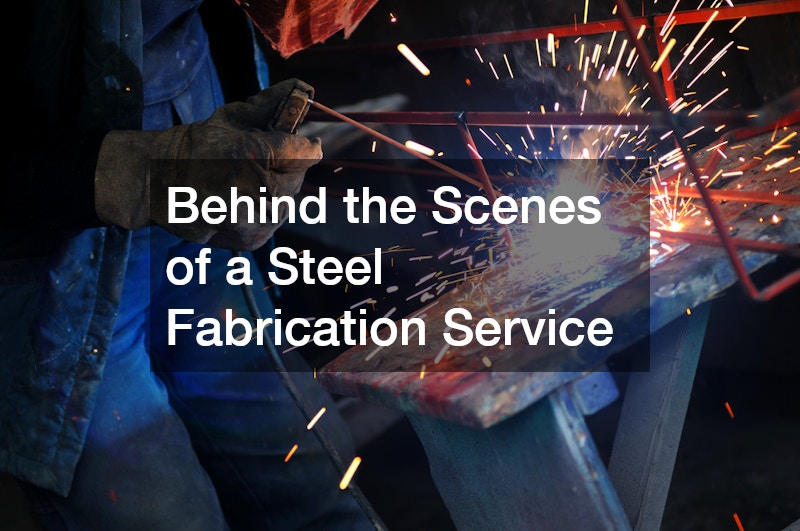The steel fabrication industry is an intricate and vital component of modern infrastructure and manufacturing. Delving into the world of steel fabrication reveals a complex array of processes and technologies that are pivotal for producing everything from skyscrapers to household appliances. Understanding the operations, innovations, and environmental considerations within the field is essential, providing a comprehensive understanding of what goes on behind the scenes of a steel fabrication service.
Key Processes in Steel Fabrication
A central part of steel fabrication involves a sequence of processes such as cutting, bending, and assembling. Cutting, for instance, employs techniques like laser cutting, plasma cutting, and water jet cutting to size steel components accurately.
Bending follows, using press brakes and other specialized machinery to mold the steel into required shapes. Finally, assembling brings the various pieces together, often using welding as a primary method to create a unified structure. Each of these processes contributes to transforming raw steel into usable, precise products, essential for different applications.
Cutting in steel fabrication begins with drafts or designs that guide the shaping of raw material. Precision is crucial as even the slightest deviation can affect the integrity and functionality of the final product. Craftsmen and engineers utilize advanced cutting tools like CNC machines, which rely on computer control for enhanced accuracy. Such technology ensures each piece is dimensionally accurate, ensuring proper fitting during assembly. The skillful execution during the cutting phase sets the foundation for quality and precision throughout the remaining fabrication steps.
During the bending phase, flexibility and strength are paramount to ensuring the steel maintains its structural integrity. Bending transforms flat, cut steel sheets into specific shapes that will make up a final product. The precision of this process often involves simulations and tests to anticipate and mitigate metallurgical strains. Technology such as hydraulic press brakes allows fabricators to manage significant pressures and complex bends. This intricate balance of force and precision exemplifies the mastery required in steel fabrication.
Custom Steel Fabrication Services
Custom steel fabrication services are tailored to client needs through meticulous planning and collaboration. The process begins with understanding the client’s specifications, goals, and functional requirements. Fabricators work closely with clients to translate these needs into feasible designs, often using CAD software for accurate visual representations. This collaboration ensures that every aspect, from the choice of materials to the fabrication techniques used, aligns with the client’s vision. Such a client-centric approach guarantees satisfaction and builds lasting relationships based on trust and quality.
Customization in steel fabrication often involves modifications to standard procedures to meet unique project demands. Whether creating bespoke architectural elements or highly specialized industrial components, custom fabricators are adept at adapting their skills and equipment to fulfill these requirements. Fabricators may conduct workshops or provide samples and prototypes during the initial phases to refine ideas. These steps help in managing client expectations while fine-tuning the design to achieve optimal outcomes. As a result, the final product reflects both the client’s vision and the fabricator’s expertise.
The ability to offer customized solutions in steel fabrication is supported by advances in technology and a highly skilled workforce. By leveraging modern machinery and software, fabricators can efficiently produce complex, high-quality custom components. Skilled craftsmen bring a wealth of knowledge and experience, which is crucial in interpreting and executing intricate designs. This blend of technology and human expertise ensures that tailor-made solutions exceed client expectations both in form and function. The collaborative dynamic between clients and fabricators thus underscores the personalized nature of custom steel fabrication services.
Environmental Considerations in Steel Fabrication
The environmental impact of steel fabrication is a major consideration in today’s industry, motivating the adoption of sustainable practices. Steel production traditionally consumes a significant amount of energy and resources, leading to a considerable carbon footprint. To combat these effects, many fabrication services are pivoting towards more eco-friendly practices, such as implementing energy-efficient machinery and recycling scrap metal. These efforts not only reduce waste but also conserve valuable resources, contributing to a more sustainable industry overall. By focusing on environmental considerations, fabricators can minimize their ecological impact while meeting growing consumer demand for sustainable products.
Sustainability in steel fabrication also involves improvements in material sciences, such as developing high-performance steel alloys that require less raw material. These alloys reduce the weight of final products without compromising strength, leading to lower transportation costs and energy consumption during production. Moreover, advanced processes that employ precision cutting and assembly reduce waste and improve overall efficiency. Adoption of these sustainable practices enables fabricators to offer environmentally responsible products, enhancing their appeal to eco-conscious clients. These evolving practices signal a shift towards an industry that values ecological balance as much as economic gain.
Government regulations and consumer preference are driving changes towards greener steel fabrication methods. Policymakers are increasingly setting standards that mandate energy efficiency and waste management, prompting industry players to innovate in their approach to environmental conservation. Additionally, consumers are increasingly aware of the environmental impact of the products they purchase, prompting demand for fabrication services that prioritize sustainability. This shift not only helps in conserving the environment but also enhances the reputation and marketability of fabrication services. Through these combined efforts, the steel fabrication industry is gradually transforming into a more environmentally responsible enterprise.
Exploring the intricate world of steel fabrication reveals a complex interplay of processes, innovation, and environmental awareness. Understanding the key processes highlights the precision required to transform raw steel into durable, functional products. The role of technology and innovation is evident in enhancing efficiency and enabling custom solutions to client specifications. Additionally, the industry is progressively adopting sustainable practices to lessen its environmental impact, resonating with the global shift towards eco-consciousness. As the steel fabrication industry evolves, the focus on quality, sustainability, and innovation will continue to shape its future, ensuring it remains a vital component of global manufacturing.

